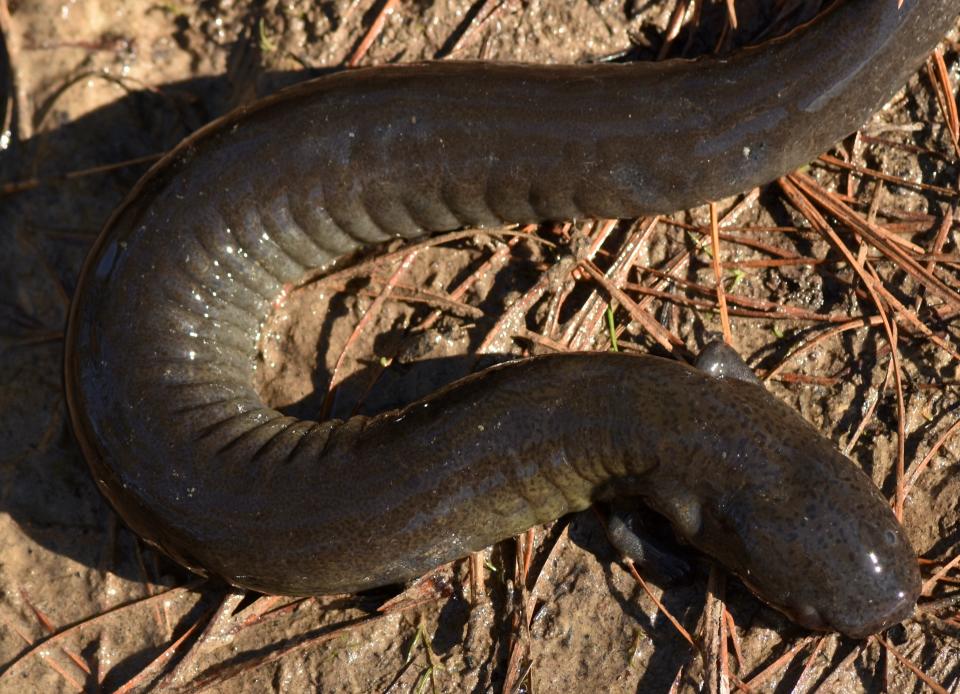We have some oddities in our midst | ECOVIEWS
When we think about fascinating animals, we tend to focus on places like Africa, Australia and the deep blue sea with their laughing hyenas, duckbill platypuses and giant squids, respectively. But some U.S. creatures, many of which people have never seen or even heard of, have notable features of their own.
Some are such behind-the-scenes critters, even biologists know little about them. Three engaging ones come immediately to my mind. All may owe their continued existence to having virtually no economic significance and, therefore, not drawing attention to their presence.
More: How to avoid snake bites and what to do if you don't | ECOVIEWS
We have seven kinds of moles in North America, the most familiar one being the eastern mole that burrows across lawns, golf courses and gardens.
The starnose mole, found throughout much of the same geographic range, is a true enigma. It is unique among mammals by having 22 long, fleshy tentacles that flare out from the end of the nose. The exact function of the tentacles remains unknown (as far as I know). But presumably the fleshy extensions are used to locate prey by sensing vibrations, bioelectric signals or chemical cues.

Starnose moles also differ from the others by being expert swimmers in lakes and streams. They reach a length of less than 6 inches. The general biology of starnose moles is poorly understood, and many biological mysteries surround these creatures.
They may be much more common than indicated in mammal field guides. At the Savannah River Ecology Lab, we captured starnose moles with a trapping system known as pitfall traps in regions where they were not known to occur. Though starnose moles fall into pitfalls, they do not enter standard mammal traps, which means they often go undetected by mammalogists.
What do we know about the mountain beaver, or aplodontia, of the western states?
Mountain beavers are rodents but belong to a different family from true beavers. The North American species is the only living member. Some biologists consider them to be the most primitive rodents in the world.
Mountain beaver, which have no obvious tail, look somewhat like dark brown, footlong guinea pigs. They have tiny ears and eyes. Little is known of their biology except that they make burrows and trails along the edges of waterways. A type of flea is found only on mountain beavers; it would have no interest in biting dog, cat or human.
Sirens, which I have mentioned in other columns, exemplify sliminess. Most people trying to pick one up for the first time cannot hold on to it.
In addition to being slick and slippery, they are the only vertebrate in the eastern U.S. with two front legs and no rear ones.
They seldom leave the water and would quickly dehydrate if stranded on dry ground. So what do great big water-dwelling salamanders do when their aquatic habitats dry up completely during long-term droughts? They burrow into the mud while secreting a slimy body covering that hardens into a cocoon. This keeps them moist, from a few months to more than a year.

When rain returns and the cocoon is exposed to water, the siren emerges and begins feeding on aquatic insects and other invertebrates that have also survived the drought. Sirens kept as pets have been known to live for decades; no one knows how long they can live in the wild.
Their courtship and mating behavior are also a mystery, even for specimens kept in captivity. Amphibian biologists are not sure how closely related sirens are to other salamanders. Some argue they are not salamanders at all, but some other type of amphibian.
These three intriguing animals bring to the fore a couple of ecological insights. First, scientists still know relatively little about the biology of some U.S. animals, which means we still have much to learn about the natural world here at home. Second, many of our native creatures are as fascinating as any exotic species that has a starring role in some nature show.
Whit Gibbons is professor of zoology and senior biologist at the University of Georgia’s Savannah River Ecology Laboratory. If you have an environmental question or comment, email ecoviews@gmail.com.
This article originally appeared on The Tuscaloosa News: Three intriguing critters bring ecological insights| ECOVIEWS

